Offshore energy machines have great potential: higher capacity factors, more available space, and lower visual impacts than onshore machines. My Ph.D. thesis investigated how combining a wave energy converter (WEC) with a floating wind turbine (FWT) may produce offshore renewable energy cost savings. Attaching the WEC to the FWT greatly reduces the WEC's steel frame, mooring lines, electric transmission lines, and siting/permitting costs, which may comprise 56% of a standalone WEC's cost. A 5 MW FWT currently requires up to 1700 tons of platform steel and 5700 tons of ballast concrete for stabilization in the ocean. This required material may be reduced if the WEC stabilizes the FWT.
This thesis addressed several challenges to designing a combined FWT-WEC:
- Approach for rapidly computing the nonlinear dynamics response stastics.
- WEC parameter optimization for maximized WEC power and minimized FWT platform motion.
- Experimental verification of approaches 1 and 2.
- Design of a hydrostatic nonlinear WEC with improved power robustness in varied sea states.
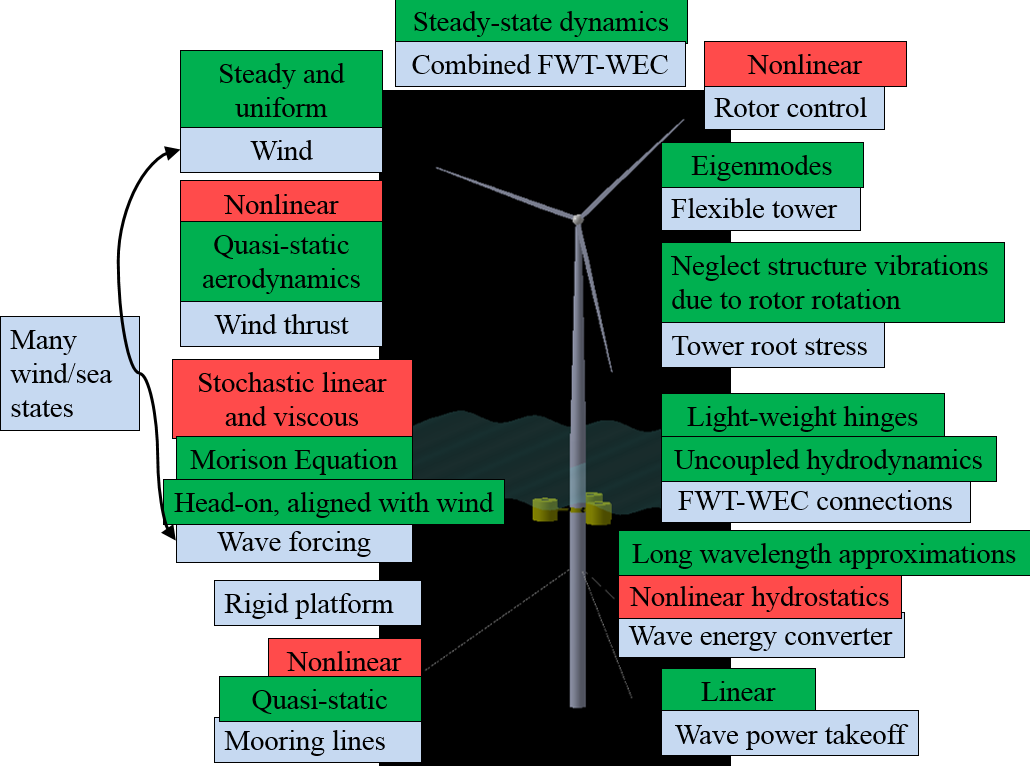
|
| Model overview: (blue) components considered, (red) modeling challenges addressed, (green) modeling simplifications used. |
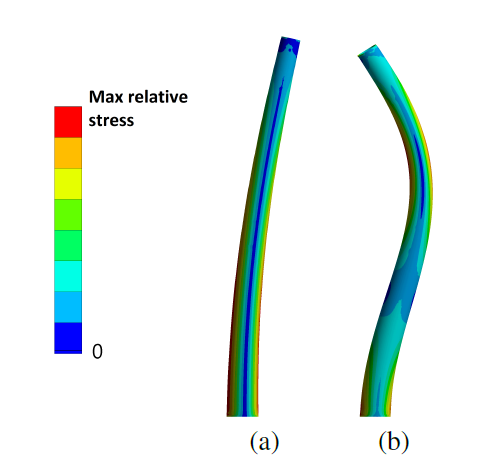
|
| Tower eigenmodes used for fatigue analysis. |
Parameter sweeps for optimizing ocean machine performance are limited by high dimensionalities and nonlinearities, including power takeoff control and wave viscous forcing, which normally require computationally expensive time-domain simulations. This thesis investigated a statistical linearization approach to rapidly compute machine dynamics statistics while accounting for nonlinearities in the frequency domain.

|
| Procedure outline for determining response statistics in the frequency domain. |
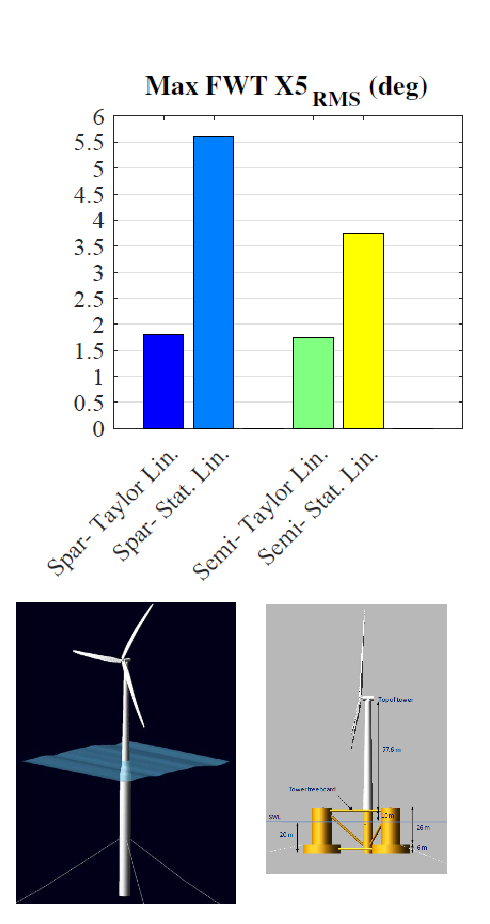
|
| Computed pitch response amplitudes using Taylor series linearization versus statistical linearization for viscous wave forcing.
Left: OC3 spar platform (Image from Jonkman, NREL). Right: OC4 semi-submersible platform (Image from Robertson, NREL). |
The WEC must stabilize rather than destabilize the FWT. As described in my thesis, typical FWT-WEC combinations destabilize the FWT. This thesis investigated the dynamics statistics of different FWT-WEC configurations. This thesis found that the most promising configuration is heave-mode oscillating water column WEC's that are linked to the FWT platform by 4-bar linkages, so that the FWT and WEC's are uncoupled for small heave motions and rigidly coupled in all other degrees of freedom. This configuration allows the WEC to move with a large amplitude in its energy harvesting degree of freedom, and therefore harvest a significant amount of power without significantly increasing the FWT motion in the same direction. In the rigidly-connected modes, the WEC inertial resistance to motion must be greater than the wave forcing, as these properties are transmitted to the FWT.
Attaching a single linear hinged floating spar oscillating water column to the FWT may reduce the wave power levelized cost of energy by 13% without affecting FWT tower stress. Attaching a single nonlinear hinged floating spar oscillating water column to the FWT may reduce the wave power levelized cost of energy to by 16% and reduced the FWT tower lifetime equivalent fatigue stress by 5%.
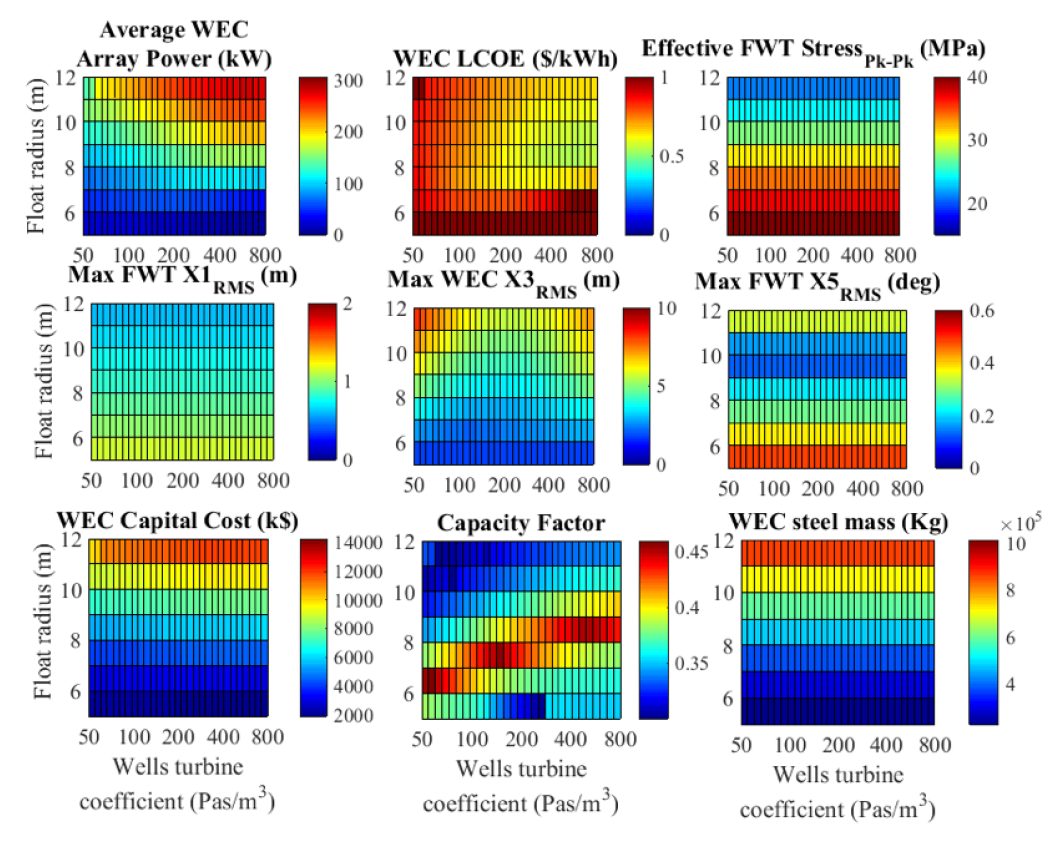
|
| Representative WEC optimization results showing effect of WEC size and WEC Wells turbine damping coefficient on WEC motion, power, and cost, and FWT motion and fatigue stress. |
In wave tank experiments, the response statistics of three different combined FWT-WEC configurations were measured, verifying the FWT-WEC dynamics model.

|
| Experimental set-up in the wave tank for freely floating and load-cell forcing tests. |

|
| Three experimentally tested WEC's. |
A WEC requires power robustness in different sea states. Typical WEC's require control schemes to maintain good power performance when the ocean wave dominant frequency differs from the WEC resonant frequency. This thesis introduced a nonlinearity into the WEC design that passively increases power adaptability in different sea states. While the optimized nonlinear WEC required 57% more steel than the optimized linear WEC, it produced 72% more power on average, resulting in a 3% lower levelized cost of energy. Further optimization of the nonlinear WEC may improve the performance.
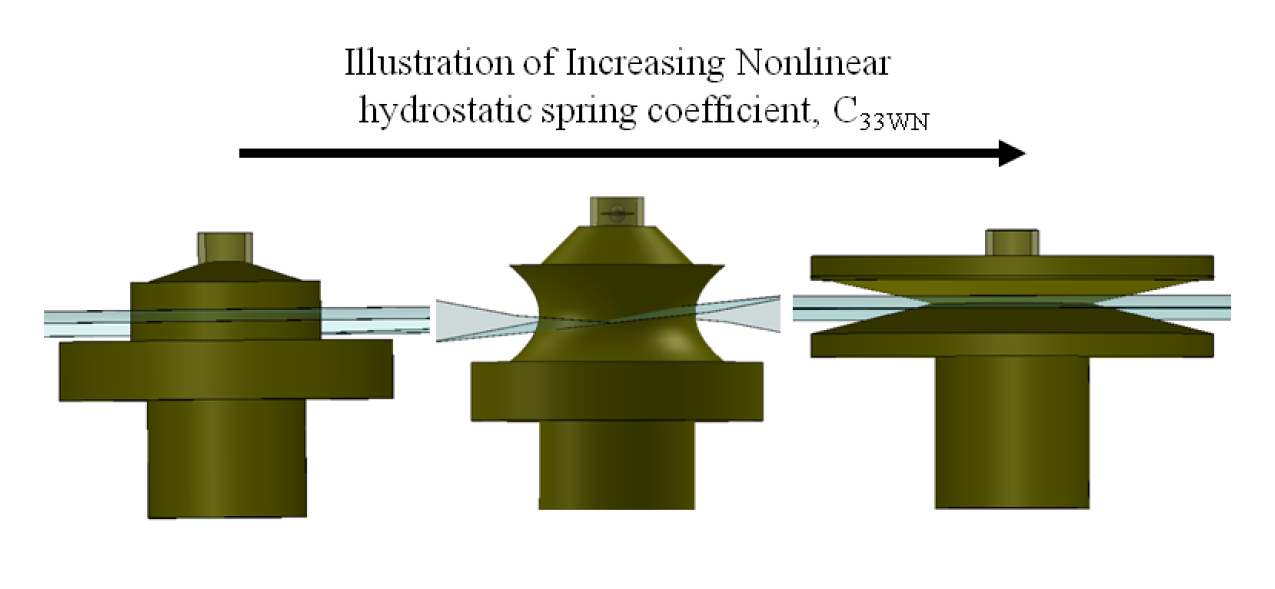
|
| Illustration of WEC increasing heave hydrostatic stiffness nonlinearity (patent pending). |